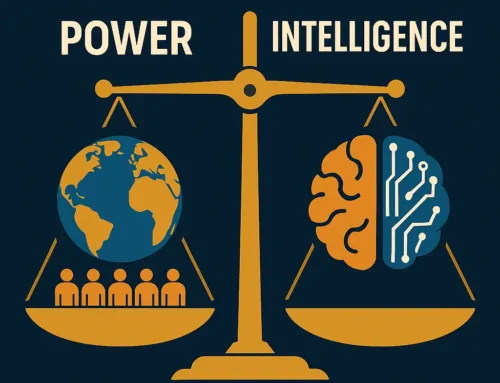
Approx. read time: 7.5 min.
Post: 10 Fascinating Facts About Civil Engineering: The Backbone of Modern Society
Civil Engineering: The Backbone of Modern Society
Civil engineering, one of the oldest engineering disciplines, plays a pivotal role in shaping the infrastructure and foundation of our modern society. From the construction of ancient aqueducts to the design of modern skyscrapers, civil engineers have been at the forefront of human civilization’s physical development. This article explores the rich history, crucial importance, various branches, current trends, and future directions of civil engineering.
The History of Civil Engineering
Ancient Origins
Civil engineering dates back to ancient times when the first humans began altering their environment to meet their needs. Early examples include the construction of roads, bridges, and irrigation systems in ancient Mesopotamia and Egypt. These early projects laid the groundwork for more complex structures and demonstrated the importance of engineering in societal development.
- Mesopotamia and Egypt: Early civilizations like Mesopotamia and Egypt developed sophisticated irrigation systems to support agriculture. The construction of the pyramids in Egypt stands as a testament to the advanced engineering skills of the ancient Egyptians.
- Ancient Greece and China: In ancient Greece, the construction of roads and aqueducts facilitated trade and communication. Similarly, in ancient China, the construction of the Great Wall and grand canals showcased significant engineering prowess.
Roman Contributions
The Romans were master civil engineers, known for their roads, aqueducts, and bridges that stand to this day. They developed concrete and advanced surveying and construction techniques, which allowed them to build structures that have endured for centuries.
- Roman Roads: The extensive network of Roman roads facilitated military movements, trade, and communication across the vast Roman Empire.
- Aqueducts: Roman aqueducts, such as the Pont du Gard in France, were marvels of engineering that transported water over long distances.
- Bridges: The Romans built durable bridges using concrete and stone, many of which are still in use today.
The Industrial Revolution
The 18th and 19th centuries marked a significant shift in civil engineering due to the Industrial Revolution. This era saw the development of canals, railways, and later, modern road networks, which transformed transportation and commerce.
- Canals: The construction of canals, such as the Erie Canal in the United States, revolutionized transportation by providing a cost-effective means of moving goods.
- Railways: The advent of railways, pioneered by engineers like George Stephenson, facilitated the rapid movement of people and goods, spurring industrial growth.
- Urban Infrastructure: The Industrial Revolution also led to the development of urban infrastructure, including sewage systems and public buildings, improving the quality of life in burgeoning cities.
Modern Developments
The 20th and 21st centuries have seen remarkable advancements in materials, computer-aided design, and construction methods, enabling the creation of towering skyscrapers, complex transportation networks, and sustainable urban designs.
- Skyscrapers: Advances in materials like steel and reinforced concrete have enabled the construction of iconic skyscrapers, such as the Burj Khalifa in Dubai.
- Transportation Networks: Modern transportation systems, including highways, airports, and subways, are critical to the functioning of contemporary society.
- Sustainable Design: The focus on sustainability has led to the development of green buildings and infrastructure that minimize environmental impact.
Why Civil Engineering is Crucial
Infrastructure Development
Civil engineers design, build, and maintain the infrastructure that is essential for modern life, including roads, bridges, tunnels, dams, airports, and sewage systems. This infrastructure is vital for the functioning of society, enabling transportation, communication, and the delivery of essential services.
Economic Growth
The development of infrastructure directly contributes to economic growth by improving transportation, facilitating trade, and creating jobs. Well-designed infrastructure attracts businesses and investment, leading to increased productivity and economic development.
Environmental Sustainability
Modern civil engineers also focus on sustainable design, ensuring that projects minimize environmental impact and contribute to a sustainable future. This includes the use of eco-friendly materials, energy-efficient designs, and the integration of green spaces in urban planning.
Disaster Mitigation
Civil engineers play a critical role in designing structures that can withstand natural disasters, thereby protecting communities and reducing the impact of such events. This includes the construction of earthquake-resistant buildings, flood defenses, and resilient infrastructure.
Branches of Civil Engineering
Structural Engineering
Structural engineering focuses on the design and construction of buildings, bridges, and other structures. Structural engineers ensure that these structures are safe, stable, and capable of withstanding various loads and stresses.
- Buildings: Design and construction of residential, commercial, and industrial buildings.
- Bridges: Engineering of bridges to span physical obstacles and ensure safe passage.
- Towers: Design of communication and observation towers that require stability and height.
Transportation Engineering
Transportation engineering deals with the design, construction, and maintenance of transportation systems. This includes roads, highways, railways, airports, and public transit systems.
- Roads and Highways: Planning and construction of road networks to facilitate efficient transportation.
- Railways: Design and maintenance of rail systems for passenger and freight transport.
- Airports: Engineering of airports to accommodate air traffic and ensure safety.
Geotechnical Engineering
Geotechnical engineering involves studying soil and rock mechanics to ensure the stability of civil engineering projects. Geotechnical engineers analyze the properties of soil and rock to design foundations, retaining walls, and other structures.
- Foundations: Design of building foundations to ensure stability and safety.
- Tunnels: Engineering of tunnels through various soil and rock conditions.
- Slope Stability: Analysis and prevention of landslides and slope failures.
Environmental Engineering
Environmental engineering concentrates on reducing pollution and improving environmental quality in civil projects. Environmental engineers design systems and processes to manage waste, treat water, and reduce environmental impact.
- Water Treatment: Design and operation of water treatment plants to provide clean drinking water.
- Waste Management: Engineering of waste management systems to reduce pollution and promote recycling.
- Air Quality: Development of systems to monitor and improve air quality.
Water Resources Engineering
Water resources engineering focuses on the management and utilization of water resources. This includes the design of dams, irrigation systems, flood control measures, and water supply networks.
- Dams and Reservoirs: Design and construction of dams to store and manage water resources.
- Irrigation: Engineering of irrigation systems to support agriculture.
- Flood Control: Development of flood control measures to protect communities.
Current Trends and Future Directions
Smart Infrastructure
The integration of technology in infrastructure, such as smart roads and automated traffic management systems, is revolutionizing civil engineering. Smart infrastructure uses sensors, data analytics, and communication technologies to enhance efficiency, safety, and sustainability.
- Smart Roads: Roads equipped with sensors to monitor traffic and environmental conditions.
- Automated Traffic Management: Systems that use AI and data analytics to optimize traffic flow and reduce congestion.
- Connected Infrastructure: Integration of infrastructure with IoT devices for real-time monitoring and maintenance.
Green Building
The focus on sustainable construction practices and materials is driving the green building movement. Green buildings are designed to be energy-efficient, environmentally friendly, and resource-efficient.
- Energy Efficiency: Use of energy-efficient materials and technologies to reduce energy consumption.
- Sustainable Materials: Incorporation of recycled and eco-friendly materials in construction.
- Green Certifications: Achievement of certifications like LEED for sustainable building practices.
Climate Resilience
Designing infrastructure that can adapt to and withstand climate change impacts is becoming increasingly important. Civil engineers are developing resilient infrastructure to cope with extreme weather events, rising sea levels, and other climate-related challenges.
- Flood Resilience: Designing infrastructure to withstand flooding and prevent water damage.
- Heat Resistance: Development of materials and designs to cope with extreme heat.
- Climate Adaptation: Planning and designing infrastructure to adapt to changing climate conditions.
Advanced Materials
The development and use of novel materials that offer better performance and sustainability are at the forefront of civil engineering innovation. These materials enhance the durability, strength, and sustainability of infrastructure projects.
- High-Performance Concrete: Development of concrete with enhanced strength and durability.
- Composite Materials: Use of composite materials that offer superior performance and sustainability.
- Self-Healing Materials: Innovation in materials that can repair themselves, reducing maintenance needs.
Artificial Intelligence and Machine Learning
Implementing AI in the planning, design, and maintenance of infrastructure is transforming civil engineering. AI and machine learning algorithms can analyze large datasets, optimize designs, and predict maintenance needs.
- Predictive Maintenance: Use of AI to predict and prevent infrastructure failures.
- Design Optimization: AI algorithms that optimize structural designs for efficiency and cost-effectiveness.
- Construction Automation: Implementation of AI in construction processes to enhance productivity and accuracy.
Conclusion
Civil engineering is more than just a technical discipline; it is a cornerstone of societal development and well-being. Its history is intertwined with the story of human civilization, and its future is crucial in addressing the challenges of urbanization, climate change, and sustainable development. As we continue to advance technologically, civil engineers will remain at the forefront, shaping the physical world to meet the ever-evolving needs of humanity. From ancient aqueducts to smart cities, civil engineering will continue to be the backbone of modern society, ensuring that we build a resilient, sustainable, and prosperous future.
What is Civil Engineering?
Related Posts:
Google Infrastructure Update May 2019?
Pixel 10 Google Photos AI Editing Magic
Experience the Amazing Virii8 Virtual World on NationStates
AI in Diabetes Treatment and Prevention
10 Revolutionary Breakthroughs Powering a Transformation in Cancer Care
Rising from the Ashes: Why I Chose to Rebuild Myself Through Advocacy
Combatting the Surge of Counterfeit Chips: The Crucial Need for Zero Trust in Tech








